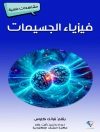Filling the need for a solid textbook, this short primer in cluster science is ideal for a one-semester lecture for advanced undergraduate students. It is based on a series of lectures given by the well-established and recognized authors for the past ten years.
The book covers both the basics of the domain as well as up-to-date developments. It can be divided roughly into two parts. The first three chapters introduce basic concepts of cluster science. Chapter 1 provides a general introduction, complemented by chapter 2 on experimental and chapter 3 on theoretical aspects. The second half of the book is devoted to a systematic presentation of free cluster properties, and to a thorough discussion of the impact of clusters in other domains of science. These explicitly worked-out links between cluster physics and other research areas are unique both in terms of fundamental aspects and of applications, and cannot be found elsewhere in the literature.
Also suitable for researchers outside of the field looking for an introduction to cluster science.
Tabela de Conteúdo
Preface XI
Units XV
1 Clusters in Nature1
1.1 Atoms, Molecules and Bulk 3
1.1.1 Scales of Matter Down to Atoms 4
1.1.2 More on Time Scales 5
1.1.3 Binding in Atoms, Molecules and Bulk 7
1.2 A New State of Matter? 12
1.2.1 From Atom to Bulk, Small and Large Clusters 12
1.2.2 Cluster Types 15
1.2.3 Cluster Science 18
2 Measuring Clusters 21
2.1 Cluster Production 22
2.1.1 Cluster Sources 23
2.1.2 Sizes and Temperatures 27
2.2 Excitations of a Cluster 30
2.2.1 Collisions with Projectiles 31
2.2.2 Laser Fields 32
2.2.3 Coupling to Light and Optical Response 34
2.3 Measuring Cluster Properties 36
2.3.1 Mass Distributions 37
2.3.2 Magnetic Moments 38
2.3.3 Photon Signals 40
2.3.4 Electron Signals 43
3 How to Describe Clusters 47
3.1 Approximations for the Ions 48
3.1.1 The Adiabatic, or Born–Oppenheimer, Approximation 48
3.1.2 Born–Oppenheimer Dynamics 49
3.1.3 Beyond the Born–Oppenheimer Approximation 50
3.1.4 Structure Optimization 51
3.1.5 Approaches Eliminating Electrons 52
3.2 Approximation Chain for Electrons 53
3.2.1 Overview of Approaches for the Electronic Subsystem 54
3.2.2 Ab initio Methods 55
3.2.3 Phenomenological Electronic Shell Models 58
3.2.4 Density Functional Theory 59
3.2.5 Semiclassical Approaches 64
3.3 Approximation Chain for the Ion–Electron Coupling 64
3.3.1 Pseudopotentials 65
3.3.2 Jellium Approach to the Ionic Background 67
3.4 Observables 70
3.4.1 Energies 70
3.4.2 Shapes 70
3.4.3 Stationary Response: Polarizability and Conductivity 71
3.4.4 Linear Response: Optical Absorption Spectra 72
3.4.5 Electron Emission 74
4 Some Properties of Free Clusters 77
4.1 Ionic and Electronic Structure 77
4.1.1 Magic Numbers 77
4.1.2 Shell Structure and Deformation 80
4.2 Optical Response 82
4.2.1 Basic Features 82
4.2.2 Impact of Deformation 84
4.2.3 Thermal Shape Fluctuations 86
4.2.4 The Width of the Mie Plasmon Resonance 87
4.3 Photoinduced Electron Emission 88
4.3.1 Total Ionization 88
4.3.2 Photoelectron Spectra (PES) 89
4.3.3 Photoelectron Angular Distributions (PAD) 91
4.4 Cluster Nonlinear Dynamics 93
4.4.1 Tunability of Lasers 94
4.4.2 On Ionization Mechanisms 95
4.4.3 Production of Energetic Ions and High Charge States 97
4.4.4 Variation of Pulse Profile 99
5 Clusters in Contact with Other Materials 101
5.1 Embedded and/or Deposited Clusters 101
5.1.1 On the Relevance of Embedded or Deposited Clusters 101
5.1.2 The Impact of Contact with Another Material 102
5.1.3 From Observation to Manipulation 107
5.2 On the Description of Embedded/Deposited Clusters 111
5.2.1 Brief Review of Methods 111
5.2.2 An Example of QM/MM for Modeling of Deposited/Embedded Clusters 114
5.2.3 A Few Typical Results 117
5.3 Clusters and Nanosystems 119
5.3.1 Towards More Miniaturization 120
5.3.2 On Catalysis 121
5.3.3 Metal Clusters as Optical Tools 124
5.3.4 Composite Clusters and Nanomaterials 125
6 Links to Other Areas of Science 127
6.1 Clusters in the Family of Finite Fermion Systems 127
6.2 Clusters in Astrophysics 133
6.3 Clusters in Climate 137
6.3.1 Impact of Clusters in Climate Science 137
6.3.2 From Aerosols to Water Droplets 138
6.3.3 Formation Mechanisms of Aerosols 139
6.3.4 Clusters as Seeds for Cloud Condensation Nuclei 140
6.4 Clusters in Biological Systems 143
6.4.1 Tailoring Clusters 144
6.4.2 Clusters for Medical Imaging 146
6.4.3 Clusters for Therapies 150
6.4.4 Nanotoxicity 156
7 Conclusion 159
Further Reading 161
References 163
Index 169
Sobre o autor
Phuong Mai Dinh is an Assistant Professor for Theoretical Physics. She joined the Paul Sabatier University in Toulouse in 2002 and gradually moved her research activities to cluster physics. She has been awarded by the French Physics Society in 2002 and by the Ecole Polytechnique in 2003 for her Ph D work.
Paul-Gerhard Reinhard is Professor for Theoretical Physics at the Friedrich-Alexander University Erlangen/Nuremberg, Germany. His research interests cover cluster physics, nuclear structure physics and plasma physics. He (co-)authored three books, several review articles, and about 400 research articles. He received several awards, amongst them the Humboldt-Bessel prize and an Honorary degree from the University of Toulouse.
Eric Suraud is Professor in Toulouse where he started a research program on dynamics of clusters and molecules in strong fields. He was director of a CNRS research association, and as Vice Director at CNRS in charge of cross disciplinarity and relations with universities. Prof. Suraud is a senior member of Institut Universitaire de France and member of European Academy of Sciences.












